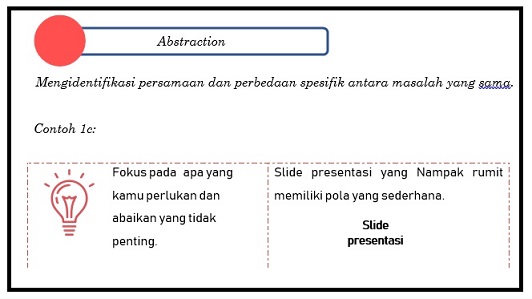
The Development of CT-S Learning Module on The Linear Motion Topic to Promote Computational Thinking
Abstract
Keywords
Full Text:
PDFReferences
Allen, M. (2017). Designing Online Asynchronous Information Literacy Instruction Using the ADDIE Model. In T. Maddison & M. Kumaran (Eds.), Distributed Learning: Pedagogy and Technology in Online Information Literacy Instruction (pp. 69–91). Cambridge: Elsevier Ltd. https://doi.org/10.1016/B978-0-08-100598-9.00004-0
Basu, S., Kinnebrew, J. S., & Biswas, G. (2014). Assessing Student Performance in A Computational-Thinking Based Science Learning Environment. Lecture Notes in Computer Science (Including Subseries Lecture Notes in Artificial Intelligence and Lecture Notes in Bioinformatics), 476–481. https://doi.org/10.1007/978-3-319-07221-0_59
Bocconi, S., Chioccariello, A., Dettori, G., Ferrari, A., & Engelhardt, K. (2016). Developing Computational Thinking in Compulsory Education – Implications for Policy and Practice. EUR 28295 EN. https://doi.org/10.2791/792158
Branch, R. M. (2009). Instructional Design: The ADDIE Approach. Boston, MA: Springer US.
Cetin, I. (2016). Preservice Teachers ’ Introduction to Computing : Exploring Utilization of Scratch. Journal of Educational Computing, 1–25. https://doi.org/10.1177/0735633116642774
Chen, G., Shen, J., Barth-Cohen, L., Jiang, S., Huang, X., & Eltoukhy, M. (2017). Assessing Elementary Students’ Computational Thinking in Everyday Reasoning and Robotics Programming. Computers and Education, 109, 162–175. https://doi.org/10.1016/j.compedu.2017.03.001
Csizmadia, A., Curzon, P., Dorling, M., Humphreys, S., Ng, T., Selby, C., & Woollard, J. (2015). Computational Thinking: A Guide for Teachers. London, UK: Computing at School. Retrieved from https://community.computingatschool.org.uk/resources/2324/single
Dam-o, P., Gondek, J., Karbowiak, M., & Wibig, T. (2018). Observation of the Effect of Gender on Children ’ s Concept of Motion ; Sustainability Issue. Sustainability, 10(9), 3076-. https://doi.org/10.3390/su10093076
Dwyer, H. A., Boe, B., Hill, C., Franklin, D., & Harlow, D. (2014). Computational Thinking for Physics: Programming Models of Physics Phenomenon in Elementary School. In 2013 Physics Education Research Conference Proceedings (pp. 133–136). https://doi.org/10.1119/perc.2013.pr.021
Gall, M. D., Gall, J. P., & Borg, W. R. (2003). Educational research: An introduction, 7th Edition. Boston: Allyn and Bacon.
Gretter, S., & Yadav, A. (2016). Computational Thinking and Media & Information Literacy : An Integrated Approach to Teaching Twenty-First Century Skills. TechTrends, 5(60), 510–516. https://doi.org/10.1007/s11528-016-0098-4
Hershkovitz, A., Sitman, R., Israel-fishelson, R., Eguíluz, A., Garaizar, P., & Guenaga, M. (2019). Creativity in The Acquisition of Computational Thinking. Interactive Learning Environments, 1–17. https://doi.org/10.1080/10494820.2019.1610451
Jeon, Y., & Kim, T. (2017). The Effects of The Computational Thinking- Based Programming Class on The Computer Learning Attitude of Non-Major Students. Journal of Theoretical and Applied Information Technology, 95(17), 4330–4339.
Kemendikbud. (2014). Konsep dan Implementasi Kurikulum 2013. Jakarta: Kementerian Pendidikan dan Kebudayaan.
Lawanto, K., Close, K., Ames, C., & Brasiel, S. (2017). Exploring Strengths and Weaknesses in Middle School Students’ Computational Thinking in Scratch. In J. P. Rich & B. C. Hodges (Eds.), Emerging Research, Practice, and Policy on Computational Thinking (pp. 307–326). Cham: Springer. https://doi.org/10.1007/978-3-319-52691-1
Lopez, V., & Hernandez, M. I. (2015). Scratch as a computational modelling tool for teaching physics. Physics Education, 50(3), 310–316. https://doi.org/10.1088/0031-9120/50/3/310
Lye, S. Y., & Koh, J. H. L. (2014). Review on teaching and learning of computational thinking through programming: What is next for K-12? Computers in Human Behavior, 41, 51–61. https://doi.org/10.1016/j.chb.2014.09.012
Mariano, D., Martins, P., Helene Santos, L., & de Melo-Minardi, R. C. (2019). Introducing Programming Skills for Life Science Students. Biochemistry and Molecular Biology Education, 1–8. https://doi.org/10.1002/bmb.21230
OECD. (2015). Frascati Manual -2015 Edition [Flyer]. Retrieved from https://www.oecd.org/sti/inno/Frascati-Manual-2015-Flyer-EN.pdf
Partnership for 21st Century Skills. (2005). A Report and Mile Guide for 21st Century Skills. Washington, DC: Partnership for 21st Century Learning.
Partnership for 21st Century Skills. (2014). Framework for State Action on Global Education. Washington, DC: Partnership for 21st Century Learning.
Peel, A., Sadler, T. D., & Friedrichsen, P. (2019). Learning Natural Selection through Computational Thinking: Unplugged Design of Algorithmic Explanations. Journal of Research in Science Teaching, 1–25. https://doi.org/10.1002/tea.21545
Postlethwaite, T. N. (2005). Educational research: some basic concepts and terminology 1. Comparative Education, 1, 1–55. https://doi.org/10.1111/j.1467-8527.2007.00388_4.x
Saez-Lopez, J.-M., Roman-Gonzalez, M., & Vazquez-Cano, E. (2016). Computers & Education Visual programming languages integrated across the curriculum in elementary school : A two year case study using “ Scratch ” in fi ve schools ez-L o. Computers & Education, 97, 129–141. https://doi.org/10.1016/j.compedu.2016.03.003
Shute, V. J., Sun, C., & Asbell-Clarke, J. (2017). Demystifying computational thinking. Educational Research Review, 22, 142–158. https://doi.org/10.1016/j.edurev.2017.09.003
Sidek, M. N., & Jamaludin, A. (2005). Pembinaan Modul: Bagaimana Membina Modul Latihan dan Modul Akademik. Serdang: UPM.
The Pearson Foundation, Microsoft Partners in Learning, & Gallup. (2013). 21st Century Skills and The Workplace A 2013 Microsoft Partners in Learning and Pearson Foundation, 1–19.
Trudel, L., & Métioui, A. (2011). Conception of A Computer-Aided Physics Laboratory to Facilitate The Understanding of Kinematical Concepts. In Proceedings of the 9th International Conference on Education and Information Systems, Technologies and Applications. Orlando, Florida: International Institute of Informatics and Systemics.
UNESCO. (2014). Guide to conducting an R&D survey: For countries starting to measure research and experimental development. https://doi.org/10.15220/978-92-9189-151-1-en
Vallance, M., & Towndrow, P. A. (2016). Pedagogic transformation, student-directed design and computational thinking. Pedagogies, 11(3), 218–234. https://doi.org/10.1080/1554480X.2016.1182437
Wilkerson-Jerde, M. H. (2014). Construction, categorization, and consensus: Student generated computational artifacts as a context for disciplinary reflection. Educational Technology Research and Development, 62(1), 99–121. https://doi.org/10.1007/s11423-013-9327-0
Wing, J. M. (2010). Computational Thinking: What and Why? Thelink - The Magaizne of the Varnegie Mellon University School of Computer Science, 1–6. Retrieved from http://www.cs.cmu.edu/link/research-notebook-computational-thinking-what-and-why
DOI: http://dx.doi.org/10.31258/jes.3.3.p.270-280
Refbacks
- There are currently no refbacks.
Copyright (c) 2019 Isra Khasyyatillah, Kamisah Osman

This work is licensed under a Creative Commons Attribution 4.0 International License.
Publisher: FKIP Universitas Riau












